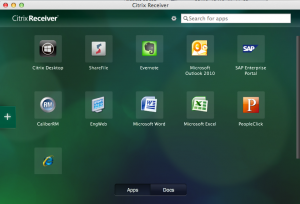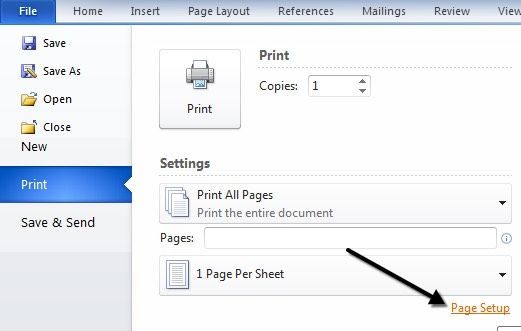What Is Citrix Receiver For Mac
Citrix Receiver connects remote client devices to Citrix Virtual Apps (formerly Citrix XenApp), Citrix Virtual Apps and Desktop (formerly Citrix XenDesktop), Citrix Access Gateway, XenVault Secure Storage, and other Citrix services. Challenges with Citrix Receiver. As with every Citrix component, Receiver has gone through multiple changes.
I’m not going to be shy about this—I was excited when announced last summer that. Don’t get me wrong, there was no dancing in my cubicle, and I wasn’t under any misapprehensions about sitting on sunny beaches getting hours worth of work done on my little iPhone screen.
What I was thrilled at was the prospect of resolving those office tech support calls that come at the most inconvenient times: The soccer field, the Yankee game, in the car on the way to dinner—anything that required me to politely excuse myself so I could drive back to the house and log in to the office. I’m happy to say that, at least for me, that was not misplaced excitement. For day-to-day work, though, Citrix Receiver is severely limited. Your Office on Your iPhone: Citrix Receiver squeezes your office’s Citrix enviroment down to iPhone size and makes it possible for you to get some work done in a pinch.Citrix excels at presenting users with their office’s Windows desktop environment on virtually any platform.
Log in to Citrix from your Mac, PC, Linux, Unix, or OS/2 (no, really, OS/2) machine, and no matter where you are, you’ve got access to the Windows desktop you use at your office. In this regard, doesn’t disappoint and makes navigating that desktop easy. Pinch, drag, or swipe the screen and you can get to anything on your Windows desktop with relative ease. Press Citrix’s Scroll Mode button and you can swipe up, down, left, or right to see the contents of open windows. Tap once to left click; twice to open an application, document, or folder; double-tap and hold to right click; or triple-tap and drag to drag items where you want them.

Everything works as expected when navigating the Windows environment. But, depending on which applications you’re using, Citrix on the iPhone can either be amazing or amazingly frustrating. Amazing are apps that don’t require much in the way of typing or that don’t require you to see the majority of the screen to use them. For example, Microsoft Excel and Citrix’s AccessConsole, used by administrators to manage Citrix servers and the users and resources on those servers, work quite well because they don’t need much screen space all at once. In most cases, you can do everything you have to in a small, focused area with one or two clicks, a small swipe, and a few characters typed into a field. In fact, I was able to use the AccessConsole to shadow a remote user and resolve a problem using the Citrix app without any issues But programs like Microsoft Word, that use—and in most cases, require expansive screen real estate to be usable, are studies in frustration. Yes, you can type and edit documents in Word using the Citrix app, but formatting text is nearly impossible as the Citrix environment doesn’t (and quite possibly can’t) use any of the iPhone’s text selection features.
Simply put, the Citrix receiver for Mac is designed to receive (obviously) signals for any other device that you have which has the Citrix Receiver installed. However, the app still has many limitations that for some users just don’t make it worthwhile. Simply put, the Citrix receiver for Mac is designed to receive (obviously) signals for any other device that you have which has the Citrix Receiver installed. However, the app still has many limitations that for some users just don’t make it worthwhile.
Is Citrix Receiver Spyware
In fact I couldn’t even triple-tap to select a paragraph, so I was limited to double-tapping individual words to individually change their formatting. Furthermore, once the iPhone’s keyboard is on the screen—especially if you have to have the function keys displayed, as I do for day-to-day work—there’s very little real estate left for typing. This is exacerbated by the fact that the Citrix app has no awareness of where your insertion point is when you’re typing, so when you type past the edge of the screen you have to swipe to see what you’re working on. For me, with Word’s zoom level set to 100 percent and the Citrix screen pinched to the point where the text was legible on the screen, I was able to type about ten words before my text slipped off the edge. Not impossible to use, but nothing you’d want to use for more than five or ten minutes worth of work.
What Is Citrix Receiver On My Mac
 In the end and for the average user, Citrix Receiver is good in a pinch where small amounts of work need to be completed and there’s no chance of performing the same task on a full-sized computer. But it’s nothing you’d want to use for more than a few minutes. For the Citrix administrator or anyone involved in supporting users in the Citrix environment, this app offers a much longer leash, giving the administrator access to all of Citrix’s administration tools without requiring the administrator to be tied to a desk.
In the end and for the average user, Citrix Receiver is good in a pinch where small amounts of work need to be completed and there’s no chance of performing the same task on a full-sized computer. But it’s nothing you’d want to use for more than a few minutes. For the Citrix administrator or anyone involved in supporting users in the Citrix environment, this app offers a much longer leash, giving the administrator access to all of Citrix’s administration tools without requiring the administrator to be tied to a desk.